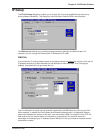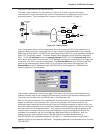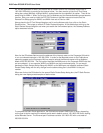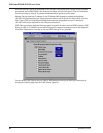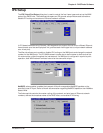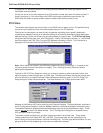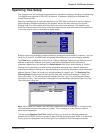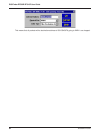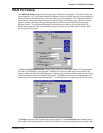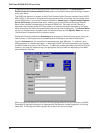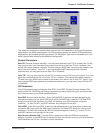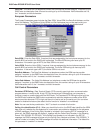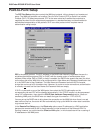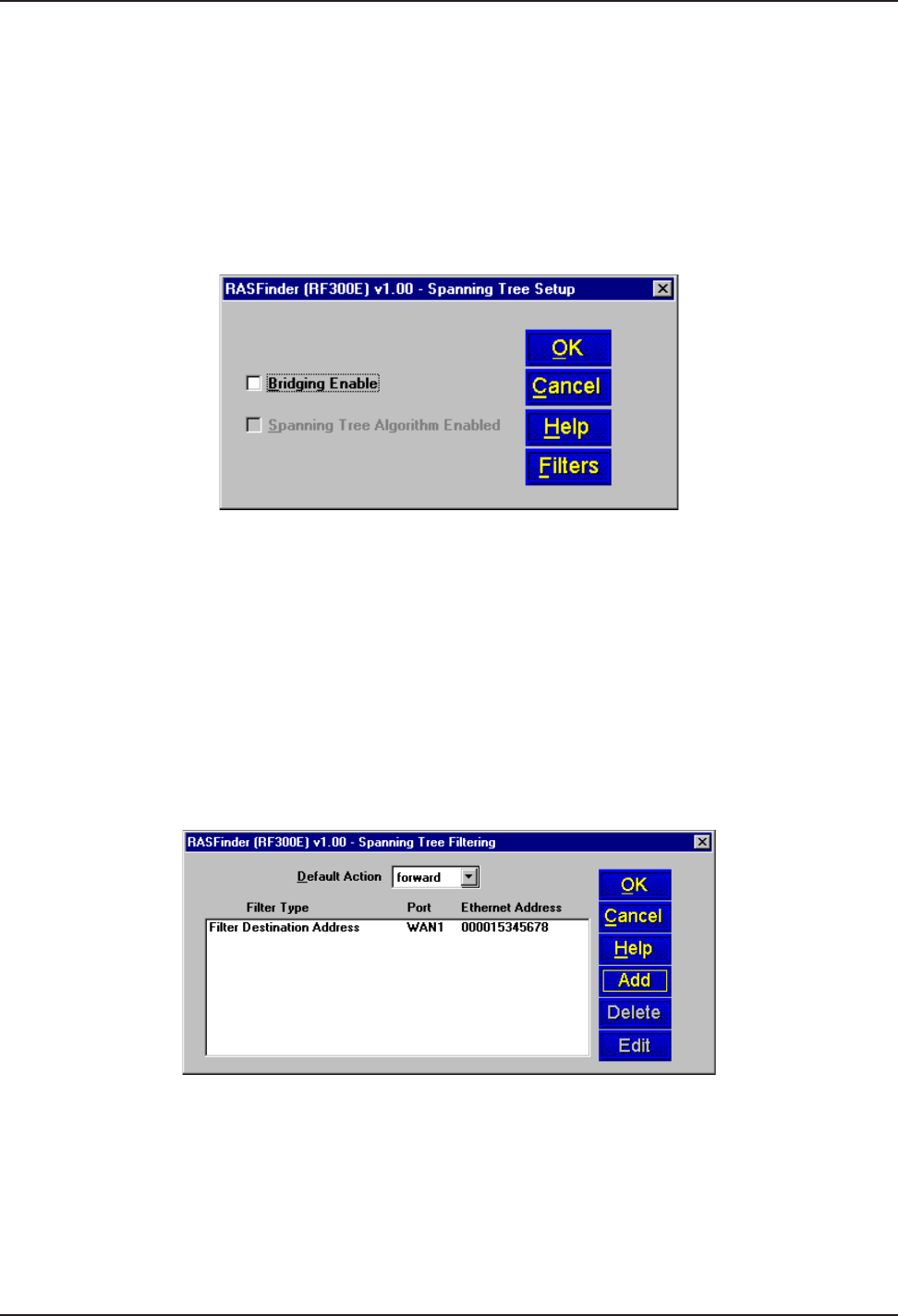
Chapter 4 - RASFinder Software
RF300E/RF310E 63
Spanning Tree Setup
This dialog box lets you configure the parameters for transparent bridging or bridging using Spanning
Tree Algorithm as specified in IEEE 802.1d standard. Transparent bridging occurs between two
remote Ethernet LANs.
Spanning Tree Algorithm is a protocol specified by the IEEE 802.1d standard for use by bridges to
perform bridging. Bridges implementing this protocol interact with each other so as to prevent
bridging-loops in an internetwork with redundant links to the same networks. This algorithm also
allows for automatic use of alternative routes (provided there are redundant paths to the destination)
in case the original route is unavailable for some reason.
Bridging needs to be enabled to support networking protocols such as NetBIOS. However, if you are
using only IP and IPX, the RASFinder will operate more efficiently if you leave bridging disabled.
The Filters button enables the construction of a filtering database. Packets whose Ethernet source
address or destination address is not found in the filtering database will either be filtered or
forwarded, depending on the setting of the Default Action field, with a default setting of “forward.”
Filtering can be used when you want to block all packets originating from a specific destination
(called source address filtering) or all packets heading for a particular destination (called destination
address filtering). Filters can be set up to exclude packets of a specific port. The Spanning Tree
Filtering Setup dialog box lists the filters by filter type, port, and Ethernet address. Initially, the
filtering list widow, i.e., the window area that displays the Filter Type, Port, and Ethernet Address
information is blank. This information is displayed in the window when the Add/Edit Spanning Tree
Filter dialog box is filled out.
Note: When filters are installed, the RASFinder needs to do extra processing (i.e., it needs to look
into each packet that has to be routed or bridged). Thus, installing too many filters may lead to
performance degradation.
The add or edit Spanning Tree Filter dialog box allows you to enter the Ethernet address (for
example 00015345678) to which you want to apply filtering, the physical port (WAN 1) on which the
filtering is going to be applied, and the filter type in our example of Filter Destingation Address.



